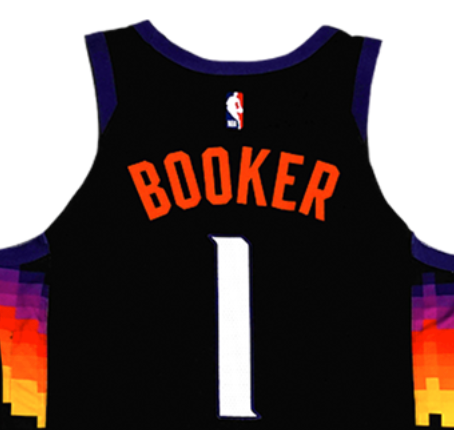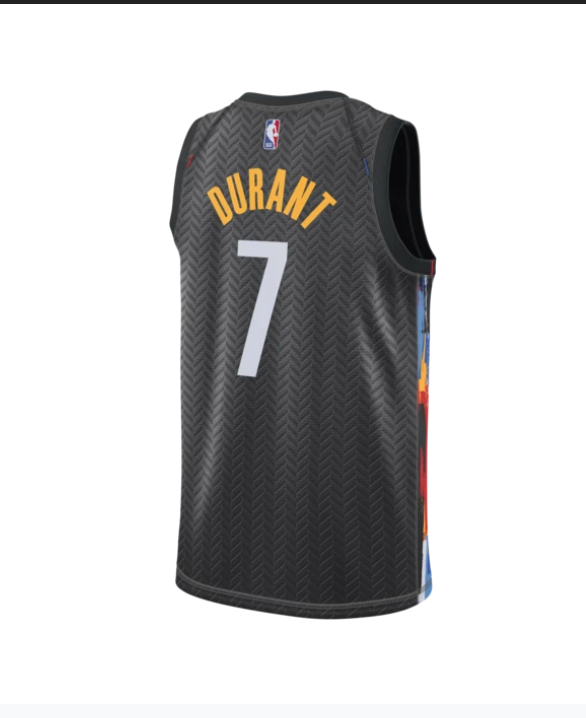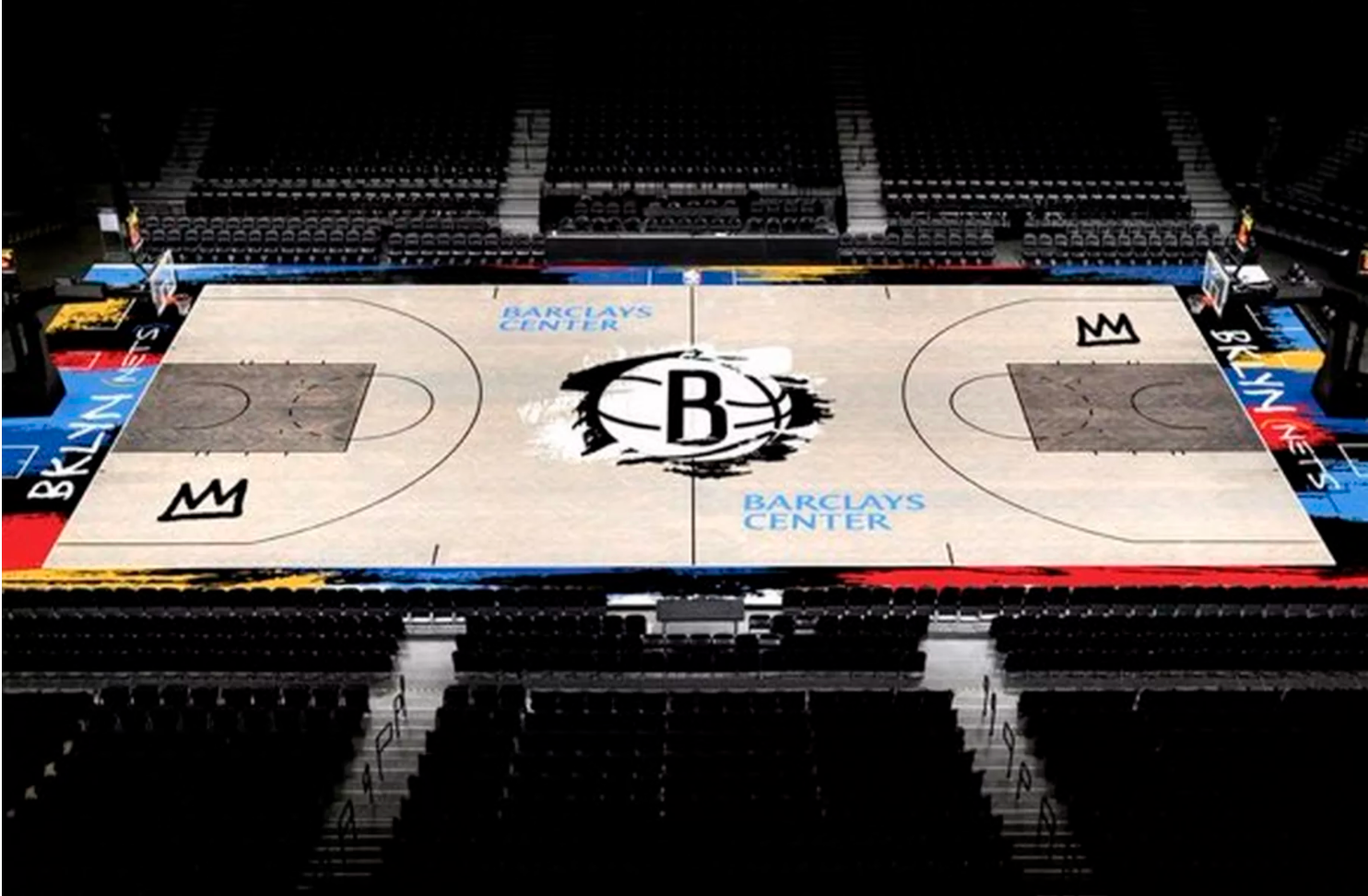Time for this week's 10 things, including Stephen Curry passing every possible test, the wonders of Ja Morant and diversification in Zion Williamson's game.
1. The every way, everywhere greatness of Stephen Curry
Yup, he's all the way back. After another 40-piece against the Orlando Magic Thursday, Curry is averaging an even 30 points per game on 49/43.5/93 shooting, busting out new shimmies, and making defenders appear falling-down drunk with gratuitous step-backs.
The two-time MVP has nudged his way into that conversation, propping up a ho-hum Golden State Warriors roster featuring Juan Toscano-Anderson starting in place of the team's injured centers. Curry is making Toscano-Anderson look like Draymond Green -- catapulting him into 4-on-3s in the pick-and-roll, generating layup after layup when Toscano-Anderson's defenders trap Curry.
How many players in history -- if there is even one aside from Curry -- have been just as effective scoring this way? ...
...and this way:
Curry changes directions four times in four seconds. So rude. Poor Elfrid Payton is chasing a ghost.
The first bucket hints at one of the central contradictions of Curry: the most lethal off-ball threat ever is also a great one-on-one player, and not only when he draws switches. For a bunch of reasons -- his slight build, the Warriors' overarching philosophy -- Curry has never commandeered the game to the degree most stars do.
Numbers have always suggested Curry could go rogue more. His jumper makes him a great driver. Defenders press him everywhere. If Curry so much as raises an eyebrow, they stand up or lunge at him -- easy prey for blow-bys. He has every shot in the book. Curry is shooting 52% on long 2s, and 51% from floater range, per Cleaning The Glass. Bonkers.
The Warriors are scoring 1.193 points per possession when Curry shoots out of an isolation, or passes to a teammate who lets fly -- 16th among 147 guys who have recorded at least 20 isos, per Second Spectrum. Curry is shooting on 82% of his isolations -- the highest share of his career.
His volume of isos is at its usual middling level. Even Curry's pick-and-roll usage is in its normal range -- perhaps surprising given how dependent these Warriors are on him.
Maybe if Curry hunted his own more, opponents would slot larger defenders on him -- guys tall enough to bother Curry from behind. Curry can't back people down, plow through them, or shoot over them. He is not a traditional triple-threat isolation guy, which is why he is hard to compare to other great scorers. He needs to open space. Bigger defenders close space faster. Maybe Curry embracing that style would sap the Warriors of something ineffable that makes them what they are.
For some, this season is a referendum on Curry -- on his place in history, whether he can really "carry a team," whatever that means.
After a slow-ish start, he's acing it. The Warriors are 14-12 despite: Klay Thompson's absence; Green shooting 35%; Kelly Oubre Jr. missing his first gazillion 3s; and all those injuries. They score 112.5 points per 100 possessions with Curry on the floor, and just 99.7 when he sits.
There's a long way to go. The playoffs are not a guarantee. But Curry is reminding everyone what he is, and what he has always been.
2. The balance in Ja Morant's game
Morant is a superstar in the most visceral sense. Few guards his size have had the brashness and supernova athleticism to do this:
Morant leaps into collisions with larger humans, hangs in the air as they descend, and flicks in flying layups. His swooping scoop shot is fast becoming one of the league's signature moves.
But what makes Morant a unicorn among young star guards is an ability -- and willingness -- to downshift and manipulate with patience and feel:
Even most veterans speed out of that Steve Nash under-the-rim move. Others kill their dribble and force the lob.
Morant keeps his dribble alive and slows, head on a swivel, as he reaches the edge of the paint. That pause freaks Aron Baynes into thinking the lob is coming. He retreats toward Jonas Valanciunas. Where there was once nothing, Morant conjures an open floater. You have to imagine the possibility of that shot -- to either look for it, or play with such cadence and style as to will it into existence.
Most players with Morant's speed seize every chance to show it off in transition, even if it means leaving teammates behind. Morant can do that, but he is wary of recklessness:
Calm amid chaos makes Morant unpredictable. Defenses never know whether to expect the marauding Morant, or this slowed-down dissection.
Patience is also inclusive. Morant seems to imagine this Brandon Clarke hoop even as he crosses half-court. He peeks back and spots Clarke running in front of Domantas Sabonis -- and then veers into Sabonis' path. He looks ahead and spies Xavier Tillman Sr. rumbling down the middle. Morant knows he and Tillman will occupy retreating defenders, and that he might find Clarke for a trailing layup.
Inclusiveness is a big part of why Morant appears to have the "it" factor that makes special point guards and leaders. A lot of young stars chase what they conceive as the birthright trappings of superstardom: every clutch shot, every playcall, every off-court perk.
Morant has never played like someone who believes the Memphis Grizzlies belong to him. He rarely forces his own offense. He gets off the ball, and weaponizes his speed as a cutter.
Morant has two weaknesses to address before he becomes a superstar capable of winning big in the postseason: defense and 3-point shooting. I'd wager big on Morant improving both.
3. There will be no Khem Birch slander here
I have heard clamoring for Mo Bamba to take Birch's minutes, even insinuations that Birch's mere presence on the court is evidence of organizational dysfunction. And I am here to say: I will accept no Khem Birch slander. Take it elsewhere, or I will throw a well-packed, freezer-hardened snowball right in your damned face.
Birch is not a sexy player. He's 28; there is no unknown upside. He's not a stretch big, or a rim protector. He's the fourth big on a good team.
But Birch is rock solid. He sets brick-wall screens, and threads nifty passes. He can switch onto smaller players. He's 10th in offensive rebounding rate, and even tries the occasional floater and long 2!
It's not Birch's fault the Orlando Magic are so depleted, they've sometimes shoehorned him at power forward next to Nikola Vucevic. That setup was workable last season, but it has been a disaster this time around. (The Magic are plus-6 per 100 possessions when Birch plays without Vucevic.) He might have to play point guard soon.
Birch is selfless, and plays really hard. He has earned his minutes. (And, yes, I'm still intrigued by the mystery of Bamba.)
4. The meanderings of Fred VanVleet
When we hear "so-and-so plays at his own pace," it is often a polite way of saying that player is slow. What it means for VanVleet: He takes his time choosing which lever to pull, anticipating every potential response from the defense -- and what openings those responses will expose. Every move and sub-move is calculated.
VanVleet slows with a lefty in-and-out dribble that engages Kemba Walker. Then he accelerates across the paint to drag Daniel Theis with him, and rises for what looks like a shot -- until it becomes a lob.
He is a Curry-style master at giving up the ball and relocating for 3s. He loves to criss-cross paths with his screener, hunched low in the trees, turning his size into an advantage in a game of hide-and-seek:
He sometimes runs defenders into each other. VanVleet needs all that meandering sorcery. He's 6-1, and ground-bound -- a below-average finisher around the rim.
VanVleet's drives are up, per Second Spectrum, and he's passing more out of them -- perhaps a reflection of the Toronto Raptors leaning more on VanVleet amid injuries and up-and-down play from Kyle Lowry and Pascal Siakam (surging lately!)
But he is Toronto's leading scorer, and probably their best player this season -- their top candidate for an All-Star spot. (When the chips are down, I still think Lowry will be Toronto's best player -- even if the torch-passing is near.) The Raptors have won the minutes VanVleet plays without Lowry and Siakam, per NBA.com.
5. Mikal Bridges, from the midrange!
The overlooked part of being the proverbial 3-and-D guy is the ability to drive (another "D"!) when defenders run you off the arc -- and then to make the next play. (We should really call these players 3-and-D-and-D guys, but it's not as catchy.)
The "drive" part is where Bridges has made his biggest leap. He's driving more, and finishing with aggression and polish.
Just having that defender on his hip gives Bridges room to unfurl one Stacey Augmon arm and kiss that baby off the glass.
The revelation of the last three-plus weeks has been Bridges rising up for short jumpers when he can't squeak by his guy:
Bridges has upped his volume from that in-between range, and he's making about half those attempts, per Cleaning The Glass.
These shots are important. Some defenses will hide point guards on Bridges so bigger wings can take both Chris Paul and Devin Booker. Bridges needs to punish smaller defenders even when he can't blow past them. (Doug McDermott is making this same progression for the Indiana Pacers.)
Bridges is shooting on about 64% of his drives, up from 53% last season, per Second Spectrum. The Suns have scored 1.25 points per possession on any trip featuring a Bridges drive, 32nd among 192 players with at least 50 drives. Bridges rarely turns it over.
Bridges is growing into an ideal 3-and-D player. As the Suns will find out, those players often get paid like stars. That's fine, provided the Suns stay good. Contenders should "overpay" elite complementary players because the gap between those guys and average facsimiles -- though sometimes small on the surface -- is worth paying for when you have a chance to win. It shows in the playoffs.
6. The mystery of Coby White
Anyone disqualifying White as the Chicago Bulls' point guard of the future is lying at least a little. White turns 21 next week. Players develop at different rates. Some skills come fast; some lay dormant for years.
White is dishing 5.5 dimes per game and recording assists on 23% of Chicago's buckets while on the floor -- below-average for a point guard, but about what you'd expect given Zach LaVine acts as Chicago's co-lead orchestrator.
White showed last season he can be dangerous pulling up for 3s, and that is a building block for any pick-and-roll fulcrum. He's a willing passer who sees the floor.
He hasn't built on his rookie season -- at least not yet. He's jacking more midrangers. He has hit about 42% of them -- not good enough to frighten defenses. Even after a slump-busting outburst against the New Orleans Pelicans on Wednesday, White is shooting 40% -- just 44% on 2s.
Force me to project now, and I'd bet on White settling into a role as bench gunner. That doesn't mean White growing into a starting point guard is off the table.
He has made zero progress on defense. White is prone to smacking into picks, or taking circuitous routes around them:
Bigger wings prey on White. He ranks 437th out of 459 players in ESPN's defensive real plus-minus. (The bottom three: Bradley Beal, LaVine, and Russell Westbrook.) Chicago is allowing 119 points per 100 possessions with White and LaVine on the floor -- 2.5 points worse than the league's leakiest team.
The Bulls are 10-14 -- 11th in the East, just outside the play-in slap-fight. Chicago's remaining first-half schedule is rough, and the Bulls are playing (stop me if you've heard this before) without their starting frontcourt of Lauri Markkanen and Wendell Carter Jr.
They need White to stay hot.
7. Uh oh, Zion is diversifying
When I asked Brandon Ingram earlier this season whether we might see him screen for Williamson, he shook his head and flashed a knowing grin. They were practicing it, and Ingram had seen how effective it could be -- Williamson as switch-proof mega-ball-handler, trampling panicked defenders.
Over the season's first month, New Orleans set only two ball screens per 100 possessions for Williamson, according to Second Spectrum. That number has quadrupled over the Pelicans' past eight games, and the adjustment has unlocked Williamson's playmaking; he's slinging five assists per game in that span, double his career average.
The obvious counter is to duck screens and dare Williamson to hoist. Easier said than done. Big men are less accustomed to guarding ball handlers on the pick-and-roll. Williamson can outrace defenders around the pick; provide him a runway, and you're toast.
Stan Van Gundy is mixing up who screens for Williamson, and where, and what that person does after setting the pick.
Eric Bledsoe -- shooting an unsustainable 40% from deep -- ditches that screen before setting it. That sews confusion for Bledsoe's defender -- Devonte' Graham. Should he wall off Williamson's drive -- and risk leaving Bledsoe open? Should he abandon Williamson to patrol Bledsoe? Switching risks immense bodily harm.
JJ Redick is a natural screener for Williamson; defenders are paranoid about leaving Redick -- limiting how much they can help on Williamson's drives:
The Pacers switch, but that gifts Williamson a mismatch. Help swarms, Redick feasts.
Williamson's promise as a playmaker was that he could distribute out of any scenario: from the post; on isolations up top in the mold of Giannis Antetokounmpo; rampaging in transition; and via either half of the pick-and-roll. That version of Williamson reorders New Orleans' pecking order so no one else is overtaxed. Lonzo Ball becomes a pure spot-up ball mover; he's up to 37% from deep.
It's not a coincidence New Orleans went on a season-saving win streak as Williamson engaged playmaking destructo mode.
8. It's time to talk about Jakob Poeltl's free throw shooting
Poeltl has intuitive feel on both ends. He's a willing screener, and smart passer. The San Antonio Spurs have been massively better with Poeltl in place of LaMarcus Aldridge, though it's unclear how much of that would hold up if they swapped roles full-time.
San Antonio's defense -- quietly up to ninth in points allowed per possession -- would improve. Aldridge has lost mobility and most of whatever bounce he had left. Meanwhile, opponents are shooting 41% at the rim with Poeltl nearby -- lowest among all rotation players challenging at least two such shots per game, according to NBA.com.
But, umm, Poeltl is 10-of-35 (28.6%) on free throws. Seems like a problem. He hit 46.5% last season, and has been trending down since draining 59% in 2017-18.
Related: Poeltl averages 2.4 free throw attempts per 36 minutes -- very low for a big who lives near the basket and ranks among the league's most voracious offensive rebounders.. Poeltl settles for push shots when one dribble -- or one power jump -- would take him to the rim. Poeltl has a decent floater, but that's a low-efficiency shot for all but a handful of players.
This is an intractable problem unless Poeltl improves his stroke. We have seen some Hack-a-Jak, and teams will resort to it if the Spurs play meaningful games.
9. Cam Reddish, out of synch
It's almost refreshing how disjointed Reddish is right now. He's overthinking, toggling between passivity and bizarre over-aggression. Once he lets the game come to him, he will resemble the player who tantalized last season -- the one who shot 40% from 3 over his last 25 games and looked at ease attacking closeouts.
For now, though, there are lots of unwatchable isolations:
Like, no. Reddish is shooting 23% on midrangers. The Hawks have averaged 0.222 points per possession when Reddish shoots out of an isolation or passes to a teammate who launches -- dead last among players who have recorded at least 20 isos, per Second Spectrum. You're better off punting the ball into the stands and setting your defense.
Reddish has 28 turnovers to 27 assists, and he's trying no-chance-in-hell passes.
(Everyone looks worse when Trae Young is on the bench. The Hawks are still searching for cohesion in those minutes.)
Reddish will snap out of this.
10. Colorful names on black jerseys
One way to liven up rote black uniforms: rendering text in some color other than white. We focus on uniform fronts, but snazzy back-of-jersey names make a surprisingly big difference.
Thumbs up for the Phoenix Suns using orange lettering on their Valley duds:

The Brooklyn Nets have yellow-gold names popping off their black Jean-Michel Basquiat-themed jerseys:

Brooklyn's homage to Basquiat is a keeper, especially the court:

The Nets were smart to leave chunks of the sidelines black amid the red, blue, and yellow paintbrush streaks. The colors liven up Brooklyn's grey-black look without overwhelming it. I love the smudged Nets logo at center-court.
11. Cleveland's double-center look.
I'm hoping the move to start centers Jarrett Allen and Andre Drummond in the absence of Larry Nance Jr. and Kevin Love was a temporary counter for two opponents -- Phoenix and the Denver Nuggets -- starting bigger lineups.
There is no upside here. The Cavaliers are minus-39 in 75 Drummond-Allen minutes. They are allowing almost 150 points per 100 possessions in those minutes.
Please, J.B. Bickerstaff, just start Taurean Prince or Cedi Osman. Allen can eat a temporary demotion if the Cavs must showcase Drummond ahead of the trade deadline.
